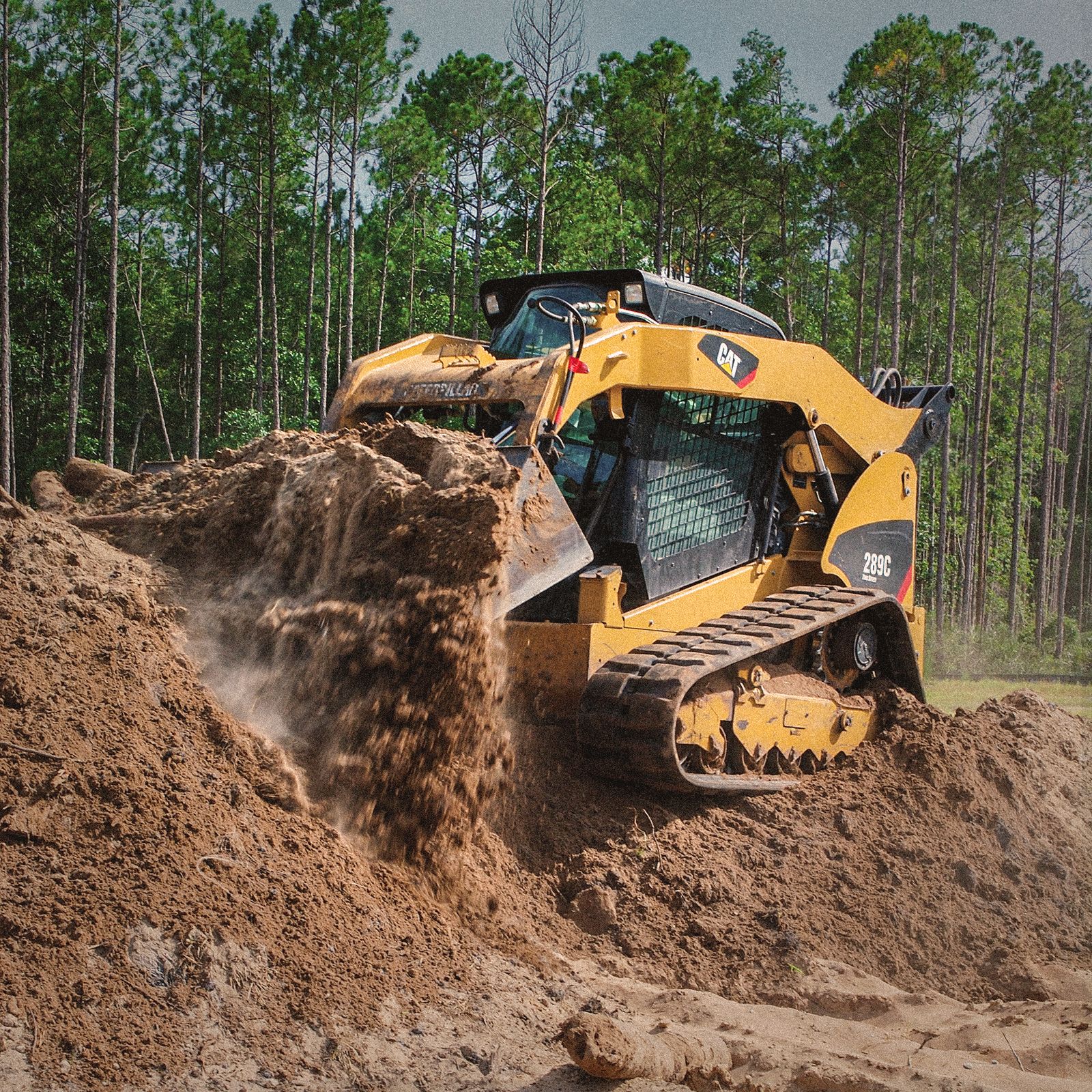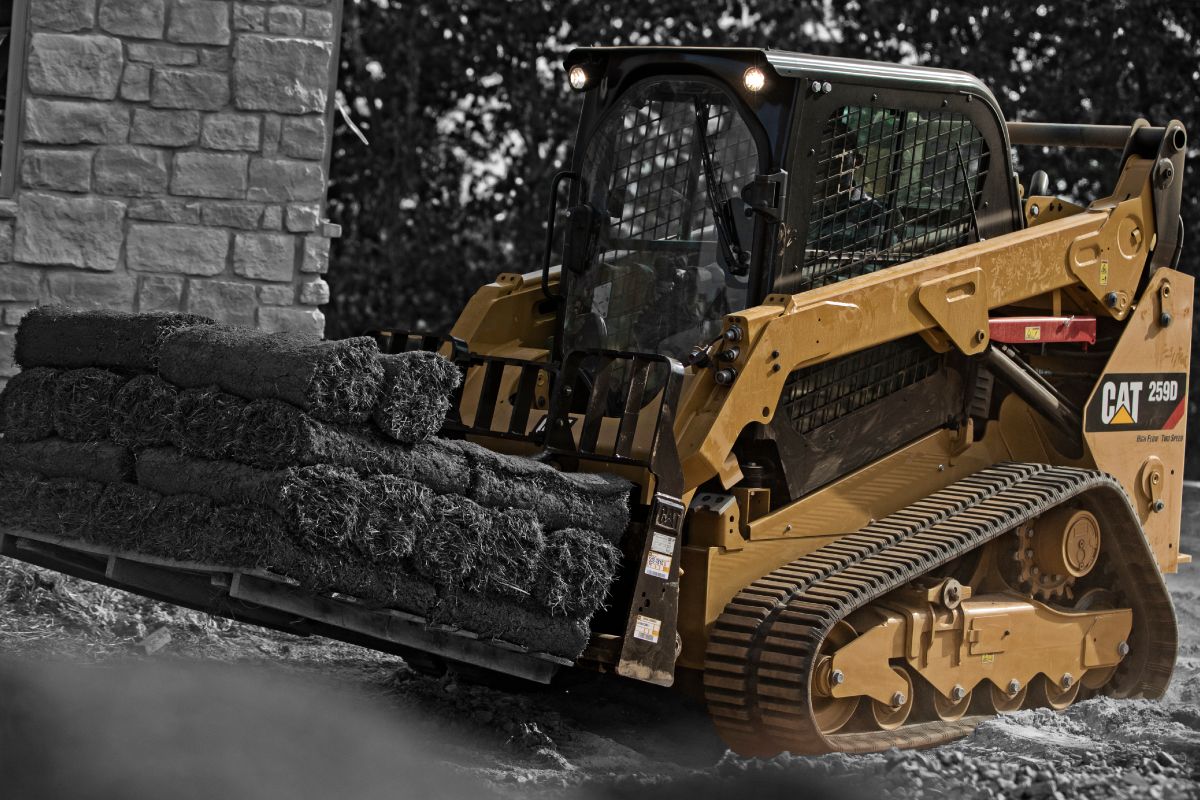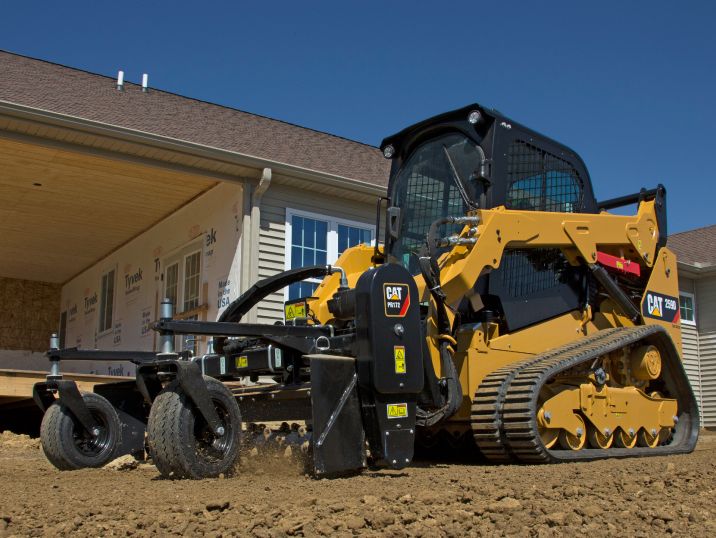

Sign In
Welcome! Sign In to personalize your Cat.com experience
If you already have an existing account with another Cat App, you can use the same account to sign in here
Register Now
One Account. All of Cat.
Your Caterpillar account is the single account you use to log in to select services and applications we offer. Shop for parts and machines online, manage your fleet, go mobile, and more.
Account Information
Site Settings
Security
How to Choose the Right Track for Your Compact Track Loader
Caitlin Maddock-Bahr | Social Media & Content Manager
That rubber track on your compact track loader has a specific purpose, and it’s important to choose the right tread for the job. For some applications you need minimal ground disturbance, and for others it’s all about traction. So how do you know you’re making the right choice? This month we caught up with Cat® Compact Track Loader specialist Kevin Coleman to put together a comprehensive track selection guide.
WHY MAINTENANCE IS KEY
Keeping your tracks in good condition is an important part of equipment maintenance for compact track loaders. “The better you take care of your machines, the longer individual components are going to last,” says Kevin. “When you run a machine efficiently, keep it clean, and follow the Operations & Maintenance Manual (OMM) recommendations you’re going to see longer life from your tracks.” You can find the OMM for your machine in the pouch behind the seat; this document provides details on machine maintenance and service.
It’s a good practice to incorporate machine walk arounds at the beginning of your workday. On Cat Compact Track Loaders, you’ll find a service chart inside the rear door that illustrates scheduled service intervals and maintenance points.
It’s important to clean and grease the undercarriage daily to maximize component life, as well as inspect the track for any signs of damage. Also check the track tension, which you can find specific guidelines for in your OMM.

Intervals for track maintenance vary depending on the application, the operator, soil conditions, climate, and condition of the undercarriage components. This is why keeping an eye on track tension daily is so important – it can really help you maximize the service life of your undercarriage components. Be sure to check track tension with the machine on a level surface and supported so that the entire track is 2 inches above the ground.
Tracks that are too tight can cause:
- premature failure of the tracks
- power loss
- bearing failures
Tracks that are too loose increase the possibility of:
- a track derailing
- track damage due to drive lugs misfeeding on the drive sprocket
Check this video for additional guidance on track maintenance and adjustment, and always remember to refer to your OMM for guidelines specific to your machine model.

HOW DO I KNOW WHEN TO REPLACE TRACKS?
You can expect an average lifespan of 1,200 to 1,500 hours from your rubber tracks when properly maintained, but there are a few factors that can affect track life. Kevin explained that there are 4 main categories of impact on track life:
- application
- operating techniques
- underfoot conditions
- maintenance practices
“Your track life is going to vary depending on several inputs. Application has an impact because wear on components is very different on various job sites and when handling different materials.”
You’ll also see differences in track life depending on how your operators handle the machine. “Tracks are naturally going to wear faster if you have someone constantly moving at high speed, making aggressive turns and counter-rotations vs. making gentle turns. Spinning tracks, when pushing into a pile for example, will also accelerate the track wear.”
In terms of underfoot conditions, the wear over time is going to be different for those who work primarily on grass vs. dirt. vs. rock vs. snow. And again, it all comes back to maintenance practices – remember to clean and inspect the undercarriage, and maintain proper track tension to get the most life out of your rubber tracks.
Kevin says, “What it comes down to is that you need to replace your tracks when the tread no longer provides the performance you expect. If you’re not getting good traction on the job or if your track has been damaged to the point that it no longer holds tension, it’s time to go shopping.”
WHAT ARE MY TRACK OPTIONS?
When you’re in need of new tracks for your machine, it’s important to know your options and find the best fit for your model and working applications. Here are two considerations:
- block vs. bar tread
- general duty vs. heavy duty
What’s the difference between block and bar tread?
- Block
- Good, durable track
- Great for a wide range of applications
- May not be the best option for snow removal
- Bar
- Good all-season track
- Does very well in snow
- Low ground disturbance
- Leaves behind a good finish
- Gives the operator a better ride on hard surfaces like concrete or asphalt
What’s the difference between general duty and heavy duty tracks?
The main differences between general duty and heavy duty tracks are expected service life, low or high hour operation (respectively), and pricing.
The general duty rubber tracks are a parts option for customers that have lower hour accumulation and are looking to lower their owning and operating costs.
Heavy duty tracks are offered in either narrow or wide track widths and either the bar or block tread patterns. When choosing between the narrow or wide track width, consider the applications in which the machine is most often used. Is low ground pressure with better floatation required? If so, you’ll want to choose a wider track option. If the application demands the narrowest overall machine width, you may want to choose the narrow track option.
Check in with your local Cat dealer for more information on the track options available to meet your needs.
HOW DO I ORDER NEW TRACKS FOR MY CAT COMPACT TRACK LOADER?
If you’re looking for additional resources to help you make a track choice for your compact track loader, we’ve got you covered. As always, we encourage you to contact your local Cat dealer to discuss your specific applications and available options.
If you know what you want and are ready to buy now, check out myparts.cat.com to order online directly. You’ll want to navigate to the rubber undercarriage section, or you can search by serial number.
You can find additional resources such as purchasing guides, quick reference guides, and undercarriage application guides on this track selection reference page.

Caitlin Maddock-Bahr
Social Media & Content Manager
Caitlin Maddock-Bahr exercises her storytelling expertise as a social media & digital strategy manager. In this role, she not only helps Caterpillar connect with their audience, but helps customers connect with the brand.
RELATED ARTICLES
You’re here to get ideas to grow your business. Read on for machine insights and expert tips and tricks to get more out of every job.
-
On The Level: Landscaping Blog
Get key industry insights, tips and updates from Caterpillar product experts and industry professionals in our On The Level Landscaping Blog.
Learn More -
Creating A Video Content Marketing Plan
Landscape business owner, Tom Gardocki, shares how you can use a video content marketing plan to help your business grow.
Learn More -
Solutions for Landscaping Labor Shortages
If landscaping labor shortages are impacting your business, look to Caterpillar for practical solutions to keep your business running strong.
Learn More
Connect with Us
In person or online, we're here to help you find the answers you need. Reach out to your local Cat dealer for advice close to home. Sign up for our newsletter to hear from industry experts. Or keep exploring this site for additional information.





